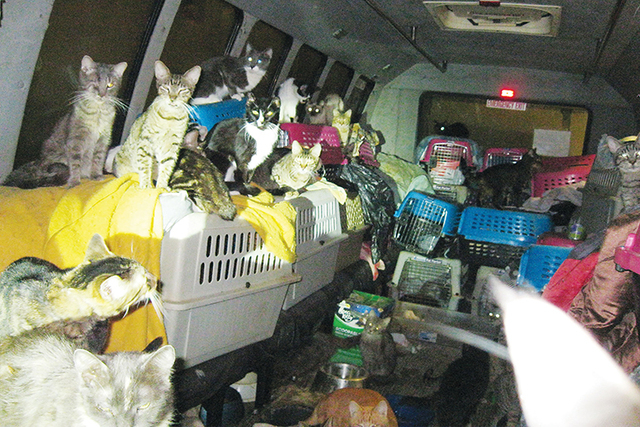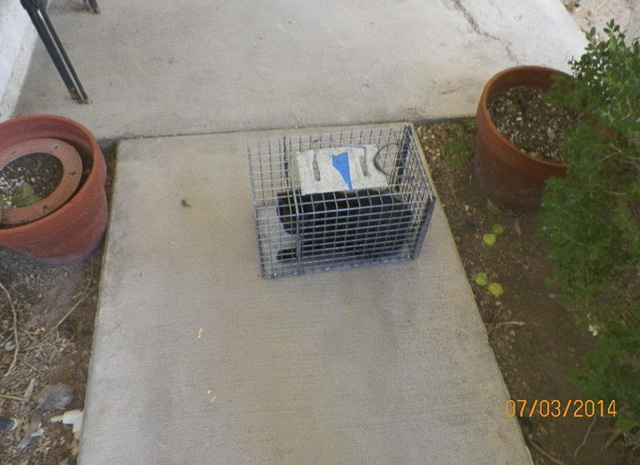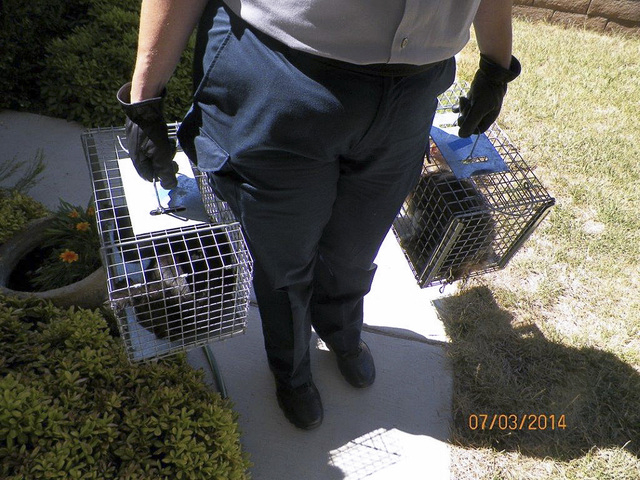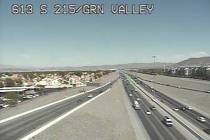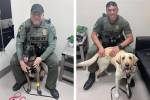153 of hoarder’s cats euthanized since 2010
A total of 153 of the 165 cats removed by Las Vegas Animal Control since 2010 from the home of cat hoarder Diane Dejongh were euthanized, some because of ill health, others because they were feral cats that were not adoptable.
Most of the cats removed from 1417 Lucaccini Lane, in the west valley, were in such poor health that they were unadoptable, said Meghan Scheibe, spokeswoman for the nonprofit Animal Foundation which operates the Lied Animal Shelter.
Over the past four years, five were adopted, one died at the shelter, one was dead on arrival, 153 were euthanized, three were placed in foster care and two went to rescue operations.
The Animal Foundation, which works with about 70 animal groups locally and regionally, has the exclusive contracts to handle animals turned in from the city of Las Vegas, Clark County and North Las Vegas. Henderson has its own shelter.
“Most of the time animals from hoarders’ homes are suffering,” said Scheibe.
Of the 153 euthanized, 18 were in such bad shape that it was an act of mercy, 46 were feral and could not be adopted, 26 had severe medical conditions, and 63 had behavior issues that made them unadoptable.
“They would not easily be rehabilitated, so this was the best possible outcome,” she said.
In the North Las Vegas hoarding case in July, she said a higher number of cats were adopted out because many were kittens and could be adopted. The foundation ended up with 124 cats taken from a woman who has since been cited for animal cruelty. While 97 were euthanized, since there were more kittens without behavioral problems, fewer had to be put to death than in the Las Vegas case.
The Animal Foundation takes in about 40,000 animals a year. Although the euthanasia numbers have been dropping, 19,659 dogs and cats were euthanized in 2013. That’s a 32 percent drop since 2010, according to the foundation’s 2013 annual report.
In 2007, in what is believed to be the worst cat hoarding case in Nevada, more than 700 cats were discovered in Pahrump in a rescue operation run by For the Love of Cats and Kittens, or F.L.O.C.K.
That case was an example of what experts say about animal hoarding, that the rescuer turns into the hoarder, that instead of helping the animals, they are hurting them.
People for the Ethical Treatment of Animals, or PETA, quotes animal hoarding expert Dr. Gary Patronek on its website. The nationally recognized Boston-based founder of the Hoarding of Animals Research Consortium said, “Hoarders are by definition oblivious to the extreme suffering … of their animals.”
He said animal hoarders often fail to provide for the animals’ most basic needs, such as food, water, shelter, veterinary care and sanitary living conditions.
The PETA article said, “Every hoarder’s behavior translates into severe, even fatal, neglect for animals in their custody. Overcrowded and filthy conditions make for easy transmission of worms, fleas, ear mites, upper respiratory infections, parvo, distemper and other diseases and can lead to feces-matted coats and urine burns.”
The experts define animal hoarders as suffering from obsessive-compulsive disorders or obsessive-compulsive personality disorder. Sadly, some experts say the relapse rate is nearly 100 percent.
City officials are still meeting to determine what to do with Diane Dejongh and her adult daughter, since their home has been deemed an “unacceptable health risk” to them by the Southern Nevada Health District.
Both women have cooperated with officials since the latest push began in June. City of Las Vegas Code Enforcement officials started the first of four cases in 2010, responding to neighbors’ complaints about odors of cat urine and feces.
Neighbor Cindy Miller, who bought the next-door home in April, aggressively complained to Animal Control and Code Enforcement, before turning to City Councilman Bob Beers, who represents the area. Neighbors Gary and Cynthia Snodgrass said they have put up with the odors for eight years, routinely calling Animal Control to pick up feral cats they have captured.
Miller is bitter that Animal Control and Code Enforcement have worked on the situation since 2010, yet the problem has increasingly become more foul, to the point where she cannot use her backyard because the cats fed by Dejongh and her daughter use it as a litter box.
Contact Jane Ann Morrison at jmorrison@reviewjournal.com or 702-383-0275. Find her on Twitter: @janeannmorrison.



